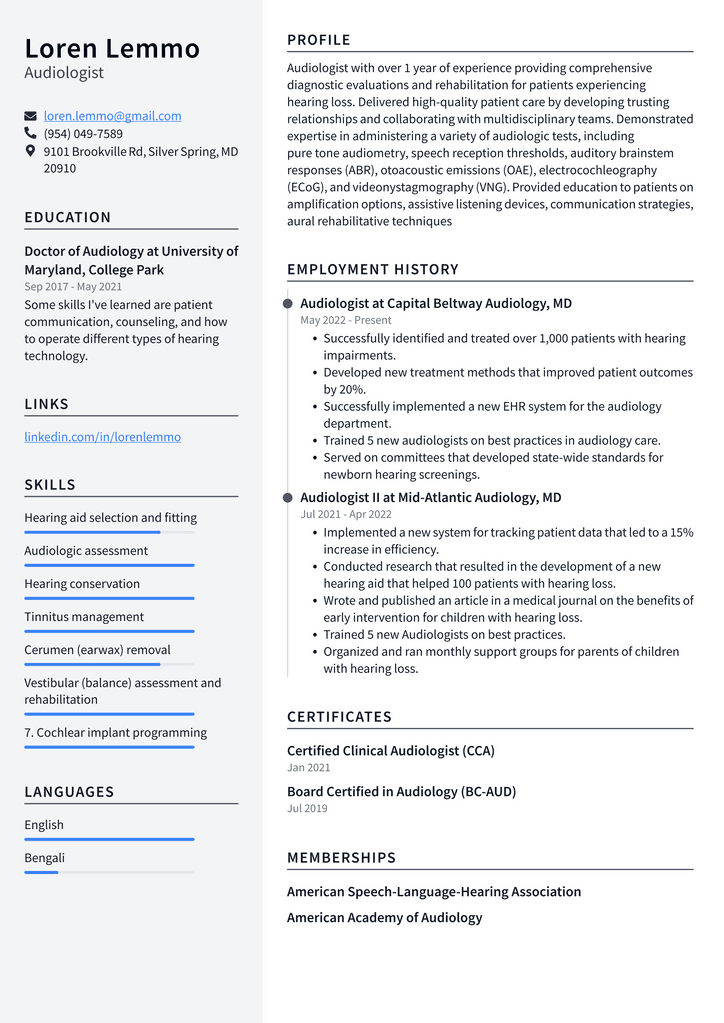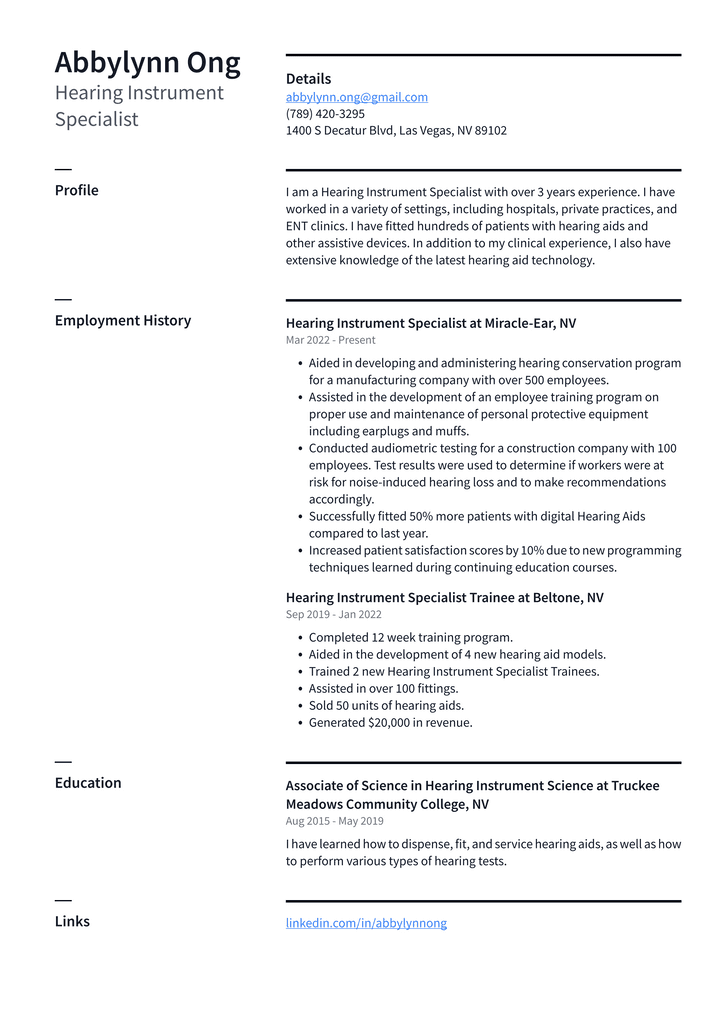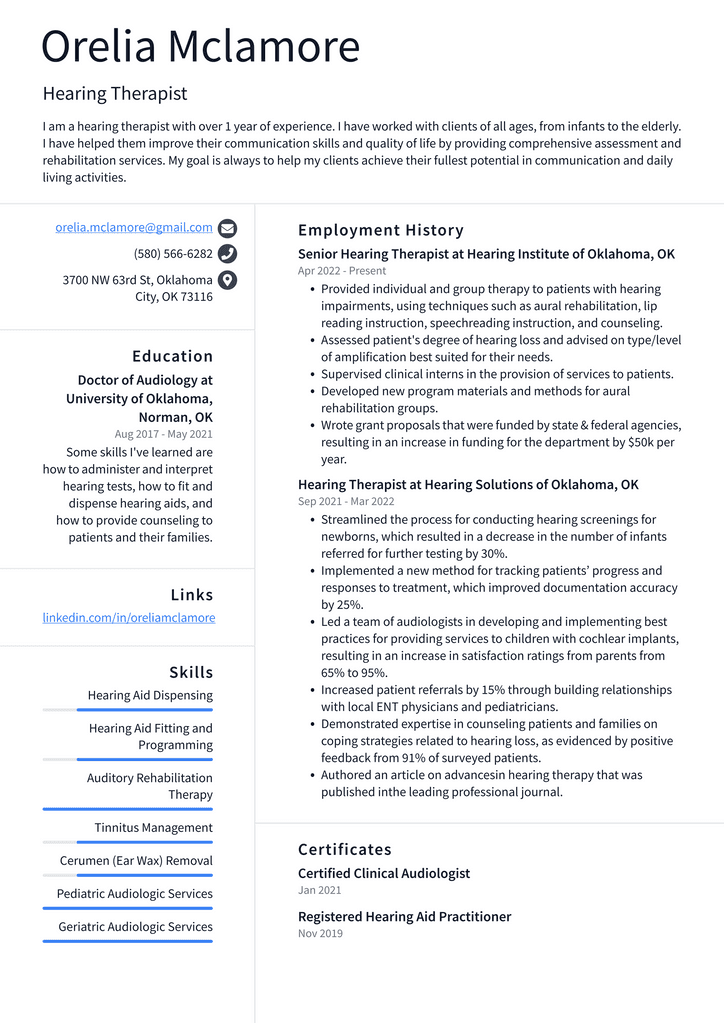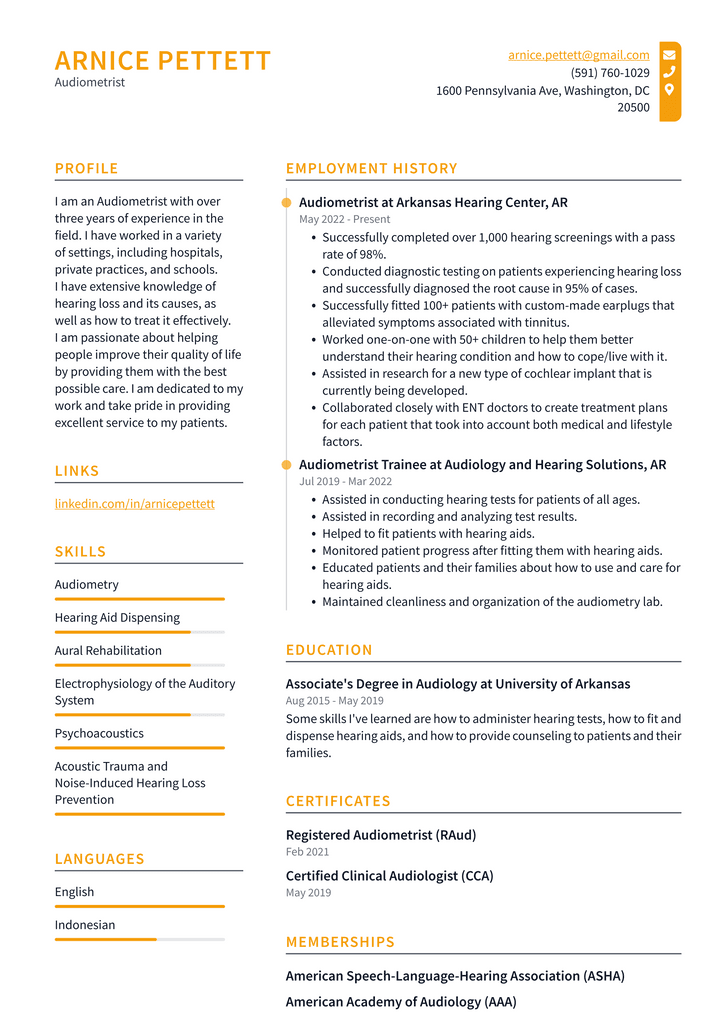Becoming an audiologist requires a lot of education. First, you’ll need to earn your bachelor’s degree in audiology, speech pathology, or another relevant field. Once you have that under your belt, you can apply for graduate school and begin working on your master’s degree in audiology. From there, you can start the process of becoming certified as an audiologist and find a job working in the field. This resume example is for those looking to enter the field of audiology from another related profession or career path. While no two resumes are exactly alike, they all follow the same general principles and structure. Using this resume example will help you understand what information you should include in yours and make sure that it meets professional standards.
Audiologist Resume Example

Download This Audiologist Resume as PDF
Hearing Aid Specialist Resume Example

Download This Hearing Aid Specialist Resume as PDF
Audiologist Resume Example

Download This Audiologist Resume as PDF
Hearing Instrument Specialist Resume Example

Download This Hearing Instrument Specialist Resume as PDF
Hearing Therapist Resume Example

Download This Hearing Therapist Resume as PDF
Audiometrist Resume Example

Download This Audiometrist Resume as PDF
Speech-Language Pathologist Resume Example

Download This Speech-Language Pathologist Resume as PDF
Resume Overview
A resume overview briefly introduces your experience, skills, and education. It should be no longer than one or two sentences and clearly explain why you are qualified for the job you are applying for. Your resume overview should highlight the most relevant skills to the job you are applying for. It should also be written in a way that is easy to understand so that hiring managers can quickly see why you are a good fit for the job.
Summary of Qualifications
Your qualifications should be listed near the top of your resume, directly below your headline. Your qualifications should include specific skills and experiences relevant to the job you are applying for. This can consist of skills you have gained through any related jobs you have held in the past and any education you have completed. Be sure to list all of the skills that you want to highlight. If you try to list too many skills, your resume may end up being too long, and you won’t be able to include everything you want to have. You may also give hiring managers the wrong idea about the kind of work you want.
Professional Experience
The professional experience section of your resume should be listed in reverse chronological order. This means you should start with your most recent job and work backward until you get to your earliest job. This section of your resume should include the name of your job, the name of the organization you worked for, the dates you held the position and a short description of your responsibilities during that time. You can use bullet points to list your responsibilities. This will keep your resume from getting too wordy and allow you to highlight only the most essential aspects of your work history. Once you have listed your work experience, you may also want to include any relevant skills you developed while working in that field. This can consist of computer programs you have experience using, certifications you have held, or other relevant skills.
Education
Your education section should list the degrees you have earned and the school you attended. If you have made multiple degrees, you may want to list the most recent first and then list your other degrees below it. If you earned your degree online or are currently enrolled in a program, you can list your expected completion date or graduation date. You do not necessarily need to list the school you attended. If you prefer, you can list the name of the degree you earned or the field of study you majored in instead. You may also want to include any relevant coursework you completed as part of your degree or any honors or recognitions you received while studying. You may also consider including any applicable licenses or certifications you have earned.
Certification
If you have completed any relevant certifications, you can include them in your resume. It would help if you listed any credentials near the top of your resume, directly below your education section. Please include:
- The certificate’s name.
- The organization that awarded it to you.
- The date you earned it.
You can also list any relevant courses or training you have completed that may have helped you make the certification. Be sure to include all of the credentials you think would be most relevant to your desired job.
Conclusion
The conclusion of your resume is where you should summarize your experience. You can do this by restarting your qualifications, including any relevant skills and experiences you listed in your resume, and highlighting why you are a good fit for the job you are applying for. You can also briefly use this section to explain any gaps in your employment history. For example, you can demonstrate that you were out of work caring for your children or ill and briefly explain why those times are important to you. This can help you explain any gaps in your employment history positively. Finally, you can do so in the conclusion section if you have any additional information that you would like to include on your resume but doesn’t fit into the other areas. This can include your interests, goals, or any other information you think hiring managers would find interesting or helpful.